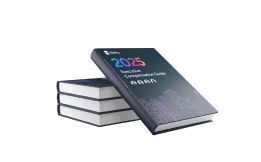Resumes can seem dull when detailing out your experience with bullet points and bolding. Some candidates go above and beyond the usual resume with personal logos, colorful headings, and distinctive fonts. But, candidates need to avoid falling into the trap of caring too much about appearance and not enough about substance. Keep yourself in check when writing your resume with the following tips.
Beware of White Space
Although white space is important for presentations, when you have only one piece of paper to represent your sills, experience, and potential, take advantage of the whole page! Make sure you fill your resume up, and avoid large white spaces on one side or the other. Putting the date range or location on the same line as a company is one way to condense the information. Have a document that is indicative of everything you will bring to any company that hires you.
Target Your Audience
Heavily designed resumes aren’t for everyone. Hiring managers are of all different ages and backgrounds; make sure your resume is appealing to anyone and not just one subset of people. Avoid going too far out of the box making it difficult to read through quickly. Leave off unnecessary images and stylistic details that can crowd a page or affect someone’s perception of you. Understand that you are most likely submitting a resume to someone who has seen countless different takes on resume formatting, and is just looking for the basics. Make a hiring manager’s job easier by stressing what they need to know, rather than making it look stylish.
Focus on the Important Stuff
When crafting your resume, focus on what it most important: your experience. Spend the most time on outlining your skills and determining which metrics are most related to the position you are applying to. If you find yourself spending more than a quarter of the time working on spacing and fonts, you aren’t filling out your resume to the best of your abilities. Remember, hiring managers read through tons of applications and only have a brief moment to focus on what you offer. Make sure they notice your qualifications, not the unique typeface you downloaded.
Organize It the Right Way
Your resume should follow your narrative. Every sentence should be additive to why you would be a valuable employee. If you start chopping up your story due to design constrictions, you can seriously dampen the effect you have on a hiring manager. Highlight your strong points, not what looks good aesthetically. Don’t let design dictate your resume.
Make Sure It’s Printer Friendly
Don’t forget that even if you email a PDF, there is no guarantee your document format won’t shift. Not every printer can handle every font. Avoid the awkwardness of picking an unusual font and then ending up with bizarre computer substitutes. Additionally, differentiating with colors can make a resume aesthetically appealing, but dramatically decrease legibility if printed in black and white. Keep your resume simple and focus on showing off your personality during interviews instead.



